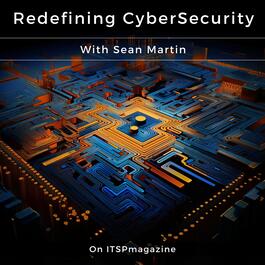
The 3-2-1 Rule for Cyber Resiliency | 7 Minutes on ITSPmagazine | An Apricon Short Brand Innovation Story with Kurt Markley
Companies, organizations and governments have massive volumes of data, and the primary focus for its security is placed on that which is stored in the cloud, but many are not following best practices of taking the extra steps necessary to ensure their backed up data is secure, complete and uncorrupted. This story is to talk about using the 3-2-1 rule for cyber resiliency (keep three copies of data, on two different formats–both encrypted, one of which is stored off-site and offline) and discuss anecdotes of what can happen when cyber resilience plans are not put in place or followed. Data is the most important asset an organization has, whether it’s a business, organization or a government. At the same time, the frequency of cyber attacks that compromise data are increasing. Ransomware continues to be a plague, with some reports showing more than 14 publicly claimed attacks daily for the first half of 2024. Having a plan to thwart cyberattack is only part of the strategy. Equally important is how to rapidly recover and restore operations after a ransomware disruption has occurred. Share anecdote about OVHcloud data center that burned down in 2021 with backups in it – all assets destroyed and websites down for days. also might be good to mention the latest ransomware attack on university of texas healthcare that is still not fully operational, 3 weeks after the attack and counting. it is unknown if they paid the ransom, but if they did and they’re still not operational, that goes to show how unreliable the ransomed data is. Apricorn’s own research shows that only half of U.S. respondents are conducting automatic backups to both a central repository AND a personal repository. Additionally, more than 25% of survey respondents were unable to recover all of their data successfully If attackers are successfully breaching data and holding it for ransom, organizations have to be able to recover complete backups of their data in order to a) avoid paying the ransom and b) assure the original data needed for restoration of operations is complete and intact, which statistics show, frequently is corrupted and incomplete when ransom is paid. One of the easiest and most effective ways to rapidly restore operations after a ransomware attempt is to keep multiple copies of integrity-checked data so you can fully recover it if it’s compromised. The 3-2-1 rule is a proven cyber resilience best practice. The 3-2-1 rule calls for keeping at least three copies of your data on two different types of media, with one being encrypted and offsite. This is where Apricorn comes into play - we make the highest grade, portable data encryption products on the market. Our products are security focused - 100% software free, FIPS certified, non-Chinese chips and so many unique features such as admin AND user forced enrollment, programmable PIN lengths, brute force defense, self destruct PINS and more. Learn more about Apricorn: https://itspm.ag/apricomebv Note: This story contains promotional content. Learn more. Guest: Kurt Markley, Managing Director, America's, Apricorn [@apricorn_info] On LinkedIn | https://www.linkedin.com/in/kurt-markley-1596054/ Resources Securing Data with Hardware Encrypted USB Drives: https://itspm.ag/apricoy0dm Learn more and catch more stories from Apricorn: https://www.itspmagazine.com/directory/apricorn Learn more about 7 Minutes on ITSPmagazine Short Brand Story Podcasts: https://www.itspmagazine.com/purchase-programs Newsletter Archive: https://www.linkedin.com/newsletters/tune-into-the-latest-podcasts-7109347022809309184/ Business Newsletter Signup: https://www.itspmagazine.com/itspmagazine-business-updates-sign-up Are you interested in telling your story? https://www.itspmagazine.com/telling-your-story
From "Redefining CyberSecurity"


Comments
Add comment Feedback